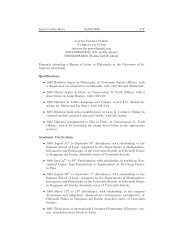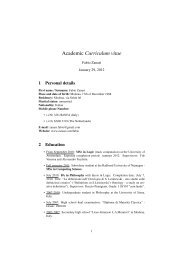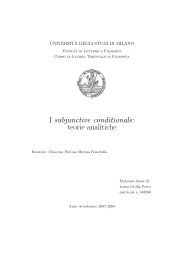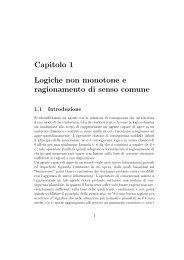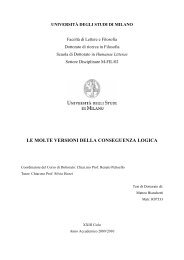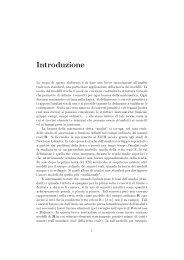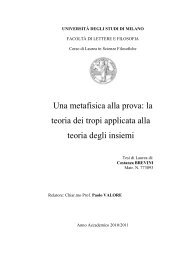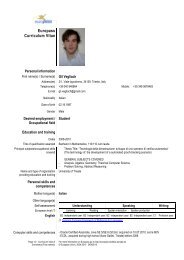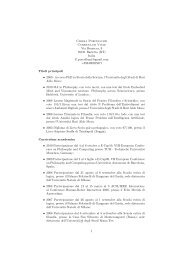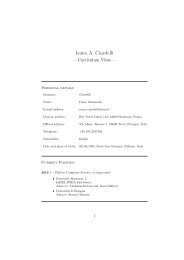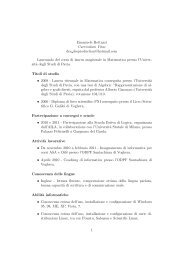Ω-Theory: Mathematics with Infinite and Infinitesimal Numbers - SELP
Ω-Theory: Mathematics with Infinite and Infinitesimal Numbers - SELP
Ω-Theory: Mathematics with Infinite and Infinitesimal Numbers - SELP
Create successful ePaper yourself
Turn your PDF publications into a flip-book with our unique Google optimized e-Paper software.
CHAPTER 1. Ω-CALCULUS<br />
Finally, in Sections 1.9, 1.10 <strong>and</strong> 1.11, we will address the problem of the consistency<br />
of the axioms of Ω-Calculus, <strong>and</strong> we will show that they admit an algebraic<br />
model.<br />
In the last section of this chapter, we will show some examples of how the model<br />
can be used to infer some properties of the theory that are not ruled out by the<br />
axioms.<br />
1.1 <strong>Infinite</strong>simal <strong>and</strong> infinite numbers<br />
Infinity is not a big number.<br />
John D. Barrow<br />
In our approach to calculus, we are interested in number fields containing infinitesimal<br />
<strong>and</strong> infinite numbers. Before we define them in a rigorous way, we need<br />
to recall some basic notions about ordered fields.<br />
Definition 1.1.1. An ordered field is a couple (F, F + ) where F is a field, <strong>and</strong> F + ⊂ F<br />
satisfies:<br />
• for all x, y ∈ F + , then x + y <strong>and</strong> xy ∈ F;<br />
• F = −F + ∪ {0} ∪ F + , where −F + = {−x : x ∈ F + }, <strong>and</strong> the union is disjoint.<br />
Then, we can define an order on F by setting<br />
x < y ⇐⇒ y − x ∈ F +<br />
We say that the elements of F + are positive, <strong>and</strong> the elements of −F + are negative.<br />
Following the common practice, we identify each positive n ∈ N <strong>with</strong> the corresponding<br />
iterated sum of the neutral element 1 ∈ F:<br />
n = 1 + . . . + 1<br />
<br />
n times<br />
Moreover, by considering opposites <strong>and</strong> reciprocals, we can suppose Q ⊆ F.<br />
Now, we want to introduce the concept of infinitesimal numbers in a formal way.<br />
The basic idea of infinitesimal numbers is that they are numbers whose absolute value<br />
is “smaller than every other (natural) number”. Other than that, we want to be<br />
able to perform field operations (sum, product, opposite <strong>and</strong> inverse) on infinitesimal<br />
numbers, so we’ll require that infinitesimal numbers are contained in a field F. Since<br />
the informal definition of infinitesimal numbers involves ordering, we require also<br />
that F is an ordered field. Putting everything together, we can rewrite the intuitive<br />
idea of infinitesimal number in the following way:<br />
Definition 1.1.2. Let F be an ordered field. A number ξ ∈ F is called infinitesimal<br />
if, for all n ∈ N, |ξ| < 1/n.<br />
2




